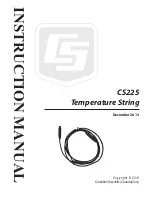
28/83 ctrlX
SAFETY
| Installation, removal, replacement and electrical installation
R911405651, Bosch Rexroth AG, DOK-XSAFE*-SAFEX-C.1XC-IT03-EN-P, Edition 03
When connecting the terminal blocks, ensure correct assignment in order to avoid damage to
the printed circuit board or the terminal block. A high plug-in resistance indicates that there is a
mix-up of the terminal blocks and the corresponding slots.
Check the upper end of the terminal block for a tight fit. If the assignment is correct, the terminal
block locks in place correctly at the upper end. The terminal block can no longer be swiveled
out without actuating the locking lever at the upper end.
Pressing the terminal blocks against the resistance of the mechanical coding leads to unreliable
contact and the resulting error indicators from the self-diagnostic of the ctrlX SAFETY SAFEX-
C.1*.
The contact (pin) designations of the terminal blocks are - viewed in the installation position -
embossed directly under the contact points.
The permissible number of plugging cycles can be found in the following table.
Tabelle 12:
Plug-in process
Number
Terminal block into device
≤
50
Wire ends into terminal block
≤
50
The alternatives given in the following table are allowed for the wire ends to be mounted in a
terminal block.
Tabelle 13:
Wire end type
AWG / Cable cross-section
Stripping length
Solid contact wire
24 - 18 / 0.25 – 0.75 mm
2
8
mm
Straight strand (untwisted)
1)
24 - 16 / 0.25 – 1.5 mm
2
8
mm
Strand
1)
and wire ferrule
24 - 16 / 0.25 – 1.5 mm
2
According to DIN 46228
Strand
1)
and wire ferrule with collar 24 - 16 / 0.25 – 1.5 mm
2
According to DIN 46228
1) in all applications, “straight (untwisted)” applies to the version without wire ferrule
It is recommended to use wire ferrules and to select them according to DIN 46228 and the
cable cross section used.
The line cross-sections must be dimensioned according to the maximum permitted current.
The wire ends must not have any burring or edges.
It is recommended not to twist strands (with and without a wire ferrule) since the stripping
length is shortened with twisting. In addition, the stability of the wire ferrule at the contact point
and the current-carrying capacity decreases due to point contact instead of line contact of the stranded
wires.
Due to the high contact density, DUO ferrules with several enclosed wire ends are not
permitted.
















































